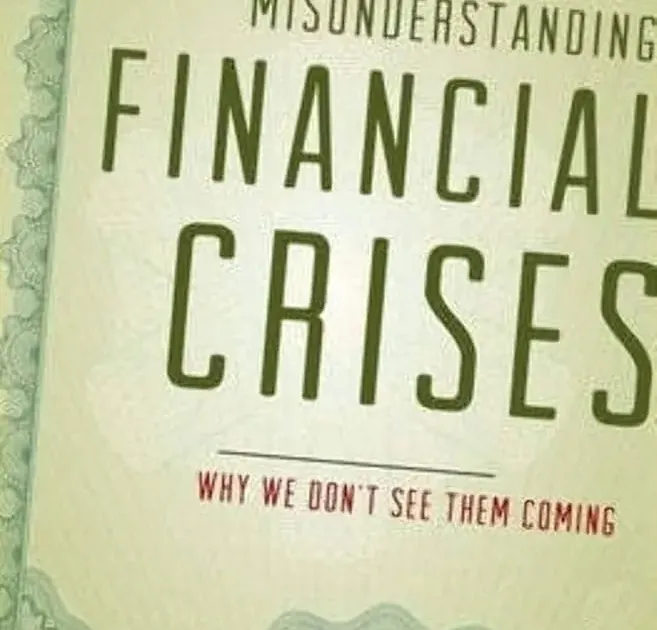Ergodicity: What Does It Mean?
Why the difference between ensemble and time averages matters for investing and risk

I read “Misunderstanding financial crises” by Gary Gorton a few years back. It has good points on why financial crises occur, and could be rewritten to have more structure and clarity. Highlights below:
Financial crises all have the same root cause - bank runs and sharp reductions in demand for deposits in the banking system. Crises occur when market participants mistrust the value of bank debt, and there’s a sudden large demand for cash from the financial institution
Demand for cash is on such a scale it is not possible for the banks to meet this demand because assets cannot be sold en masse without prices plummeting
Crises have happened throughout history, are sudden and unpredictable
Banks are in the business of borrowing and lending money, both to consumers (retail) and companies. When you or your company deposits money into the bank, you’re giving the bank a loan with the expectation you’ll be able to withdraw that cash in the future. Banks in turn lend out more money than they have, in what’s known as fractional reserve banking, with the expectation that not everyone will want to withdraw at the same time. This allows the supply and velocity of money (credit) in the economy to increase and provides liquidity.
Consumer bank runs are largely a thing of a past, due to 1) FDIC deposit insurance and 2) the size of consumer deposits vs company deposits. It’s no longer like the 1920s where 2 banks would fail a day.
The bigger risk now is bank runs from institutions, be they companies or investment firms. In times of crisis, these firms want to get their cash back. When they all want it at the same time, it’s impossible for the banks to fulfil that demand.
I’ll skip over the nuances of how these companies keep their cash; if you’ve read about the terms repo, commercial paper, or revolving credit lately, those would fall under that umbrella. To simplify, banks have obligations to companies in a variety of forms, and companies are now calling on those obligations to get cash 1.
The main point here is that liquidity is the cause of crises, not capital. The bank could still have a lot of capital in the form of illiquid assets, but be unable to provide enough cash on demand at that moment. And the bank can’t even sell the less liquid assets at a good price, since it’s a crisis, resulting in a downward spiral of liquidity.
Markets are liquid when there is nothing to know or nothing worth knowing; when there aren’t secrets
Conversely, when there are too many unknowns, liquidity stops. In the 08 crisis, banks didn’t want to lend to each other because they didn’t know which other bank was insolvent. Now, people don’t know when normal business will resume, and which businesses will survive. That’s why the Fed is stepping in to try and increase liquidity and provide a known source of funds.
The banking system has always been viewed as too big to fail. No society has intentionally liquidated its banking system; instead they choose not to enforce debt contracts. They do so by
- allowing suspension of convertibility (no withdrawals) or declaring bank holidays (total suspension of all bank services)
- declaring banks not insolvent even if they do not pay their debt
- bailouts of bad assets
Money and credit is critical to society as it stands currently, and has been for centuries now. It’s the inherent tradeoff in having fractional banking, since credit relies on trust. In good times when trust is high, liquidity isn’t a concern, credit is extended, and economic activity occurs. In bad times when trust is low, liquidity disappears, credit is withdrawn, and economic activity stalls 2.
Why don’t companies just keep cash, like you and I? Firstly, there’s lack of deposit insurance that will cover balances that large. Secondly, that cash would earn less return. Hence companies enter into repo, treasuries, and other arrangements, in which they exchange their cash for short term liabilities from others. When people think Google has $100bn of cash, that’s true - kinda. It does have that amount in total liquid assets, but only a fraction of it in cash equivalents, and the majority in securities. See their 2019 10K page 50, cash and cash equivalents vs marketable securities ↩
The book also discusses four types of potential costs from financial crises: 1) deadweight loss from fiscal transfers from taxpayers to institutions, 2) output loss and increase in unemployment, 3) misallocation of resources due to actions taken to ameliorate the crisis, 4) costs to social well being. We can reduce these costs with good policy but cannot eliminate them, and should expect these to occur in every crisis ↩
Get my next essays in your inbox:
Comments